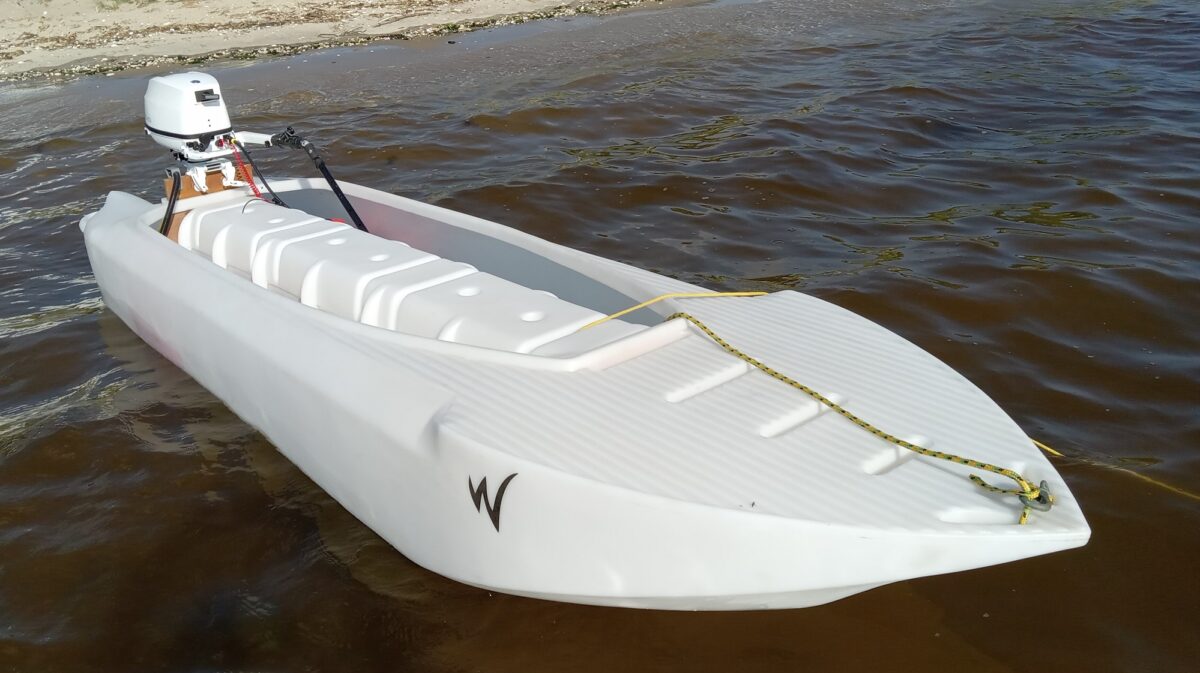A meager harvest when kayak anglers are concerned, and plenty of reasons for a good laugh 😀
2013 hasn’t been much different from previous years as far as fishing kayaks are concerned. The kayak obesity trend keeps being the main one, and it drives kayaks to reach titanic proportions. For example, kayaks that are 35 inches wide and weigh 80 lbs are almost typical, and a kayak that’s over 40 inches wide is no longer viewed as an aberration despite the fact that paddling such a kayak is quite a challenge, and almost impossible to do for medium and long distances. Leviathan barge kayaks weighing around 120 lbs are still considered as kayaks (at least by some) although even a seasoned weight lifter might find it hard to car top one, and people who buy them have to buy a trailer to go with them, which is yet another way to defy the purpose of kayak fishing.
The reason behind the persistence of this trend is the poor stability that fishing kayaks offer to their users, albeit the fact that kayak manufacturers insist that the kayaks they offer are very stable, enough to allow for kayak fishing standing… Go tell this to all those disappointed anglers who purchased such kayaks and found out that reality is different from bogus reviews and staged YouTube movies 🙁
Fishing kayak hulls keep featuring all sorts of weird longitudinal channels and vertical dimples that work perfectly to create more drag and by that further impede the kayaker and make it harder for them to paddle. The infamous scupper holes that were introduced as means to prevent the deck from collapsing but have since been hyped as drainage holes keep conducting water in both directions, which means they also drive water up and onto the deck, and into the paddler’s area.
In the twilight zone, kayaks with integrated outriggers are still being offered although the concept has proved to be rather useless in practical terms. It seems like the failure of the kayak industry to present kayaks that actually work for stand up kayak fishing drives more people to try outriggers.
New designs still appear on the scene, and they make one wonder if kayak designers have any ability to learn from others’ mistakes.
Pedal driven kayaks are still being promoted as the panacea, although reality has disproved most of their manufacturer’s claims as far as practical usefulness is concerned.
Kayak storage keeps relying on hatches, which are often inaccessible to the user while they’re out there in their kayak, trying to fish from it. Such hatches have an annoying tendency to fail to be waterproof, and that’s bad news for your sandwiches!
When ergonomic design is concerned, manufacturers seem to realize that the kayaks they offer are really uncomfortable, so they keep trying to come up with new ideas for seats, although it’s the seat itself together with the L sitting position that cause the back pain and leg numbness problems that so many anglers experience.
Motorizing… well, oddly enough, some kayak manufacturers tell their clients they can outfit their kayaks with powerful outboard gas motors. Naturally, not too many people buy into this nonsensical notion. The most ridiculous case in this regard is a kayak manufacturer who offers his clients to attach their outboard gas engine directly to the kayak’s transom, which like the rest of that kayak is made from a thin, rotationally molded plastic wall… It is only appropriate to apply Hanlon’s razor to this case, and say “Never attribute to malice that which is adequately explained by stupidity.” 😀
And last but not least, fishing kayak manufacturers keep competing with each other by offering an increasing range of useless accessories, from cup holders to stand-up metal frames and stand-up ropes and straps… The latter being pure exercises in futility, at least from the user’s standpoint.
No wonder the Wavewalk 500 keeps being the most loved fishing kayak out there!
